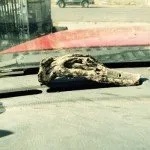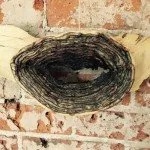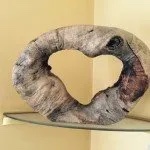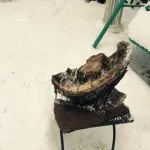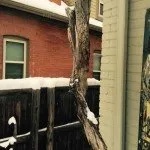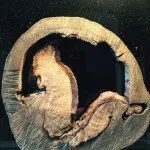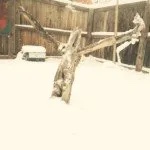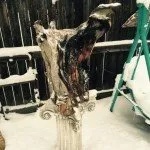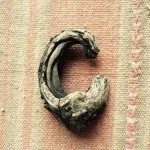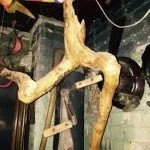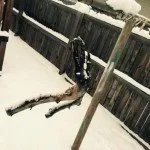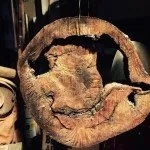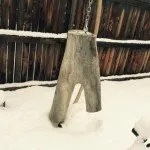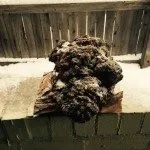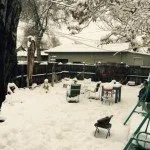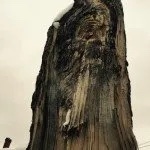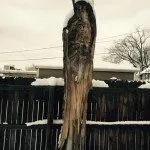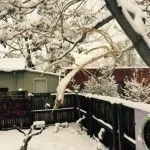TREE ART - COLLECTED THROUGH OUR TREE SERVICES
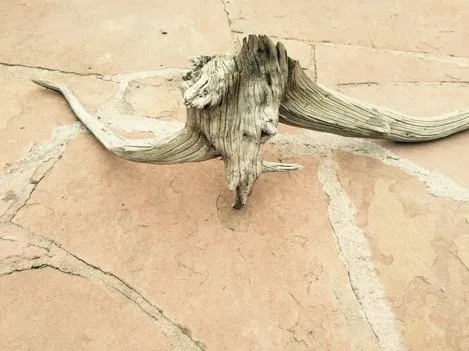
As I began making a transition to not only doing landscape work but also tree services as well in the mid 80s, I dramatically increased my exposure to interesting wood objects as a result of the tree trimming and tree removals that I did. I would come across all kinds of interesting parts of the tree that had lots of character in them and instead of throwing them in the chipper, I would set them off to the side and take them home plac- ing them in my garden or in my clients landscape projects. I began to see them as a real art form in and by themselves. In many cases I would leave the log or branch as it was but in some cases I would get my chainsaw out and reduce the size of the piece to capture the part that was the most interesting. Collecting these pieces of wood over time eventually allowed me to amass quite a collection of different pieces and I realized just like it was a hobby for me to collect fine art, antiques tools and taxidermy collecting these special pieces of wood was my hobby as well. One day when I was thinking about what I might call my hobby I was inspired as I looked at my taxidermy pieces in my collection. Looking at a word that would fit what it is that I collected and since I’m in the tree business Arbor came up. Because I work in trees a newer term that now shows up in the dictionary is arborist. And this is a term used to describe someone who works in trees and knows plant health care for trees including trimming and removing them. Another word that came to mind when I was looking at coming up with a new term to describe what it is that I did with with wood was to combine the word taxidermy because a taxidermist works with animal skins to re-create an animal or fish and so it would stand that what I would do is an arborist collecting wood preservative and explain it I would be practicing Arborderemy and if I was to describe who it was that was doing it I would be an Arbordermist.
I saw similarity between what a taxidermist does with animal skins to create a mount and what I did with that piece of wood and at that moment the word Arbordermy was born. Derivation of words that Arbordermy and Arbordermist derive from Webster’s encyclopedic unabridged dictionary. Words found in this dictionary that have close relationship with his new word.
Arbor noun.
(1) the leafy, shady recess form by tree branches, shrubs, or vines, often intertwined on a lattice work, a bower
Arbor: noun
(3) a tree, tree , beam Arbor
Arboreal: adj.
of or pertaining to trees, tree like
Arboreous: adj
living in or among trees, Abounding in trees, what it.
Arbored: adj
Furnished with Ann Arbor, shaded, lined with trees.
Arbor:(3) noun
a tree, tree , beam
Arborescent: adj.
Tree like an size inform
Arboretum: noun
A plot of land were different trees or shrubs are grown for study your display Arboriculture: noun
The cultivation of trees and shrubs, modeled on agriculture
Arborization: noun
A tree like appearance, as in certain minerals or fossils
So the next word that we will check for meaning and it’s derivation will be taxidermy Webster encyclopedic unabridged dictionaryTaxidermy: noun The art of preparing and preserving the skins animal and of stuffing in mounting them in life like form. A Taxider- mist someone who does this work.
By putting these two words together Arbor and dermy I created the word Arbordermy which perfectly fits what it is that my hobby has been for the last 30 years.
Here’s my little guy hanging at pool side.
This is a mixed media of Arbordermy and a river rock.
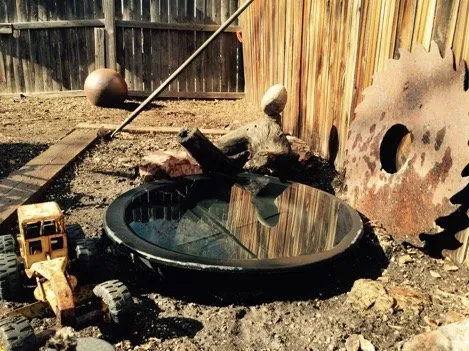
These are shards of wood that were blown out of a cottonwood tree as a result of lightning strike this last summer.They hang like a mobile and are just magical how they interplay with the wind and with each other especially on a windy day. Normally these would be put through a chipper machine but in this case are used as a wonderful piece of art hanging from a tree. The added treat with these pieces is shown in this photo with the snow being layered on them in a recent storm here in Denver. It’s cool because even with the added couple of inches of snow they still stay perfectly balanced as if the snow were not even there.
As an Arbordermist and anyone can become one, we find pieces of wood that have lots of interest and character we remove anything that doesn’t need to be there without try- ing to alter the piece or take away from its beauty and then we find a way to display it in the best possible way. Whether it’s inside or outside,whether it’s mounted to a wall or suspended from a tree.
Over the years I’ve picked up pieces of art that artist have worked into by carving and shaping to suit their purpose. Certain pieces of wood lend them selves to certain forms that artist can carve into and in the sense this is Arbordermy but a variation of it. Here’s an example by Arturo Burnel one of the first artist that I ever collected from. You can see in the piece that you’re looking at that it’s a piece of wood that’s been chewed through by worms and then he’s been carved into it wonderful dancer of sorts. This is one of my favorite pieces in my our collection. It’s not pure Arbordermy but it’s a variation thereof an Arbordermy sculpture or carving.
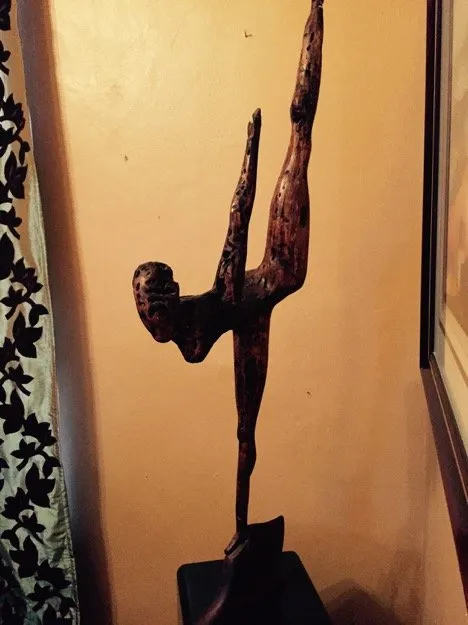
Now another piece of art that I picked up much later in the late 80s is from an artist who was a professor that taught art at the local community college in Grand Junction Col- orado. is. This was a found piece of Peach wood that the artist then carved in the figure of a man and did an amazing job of capturing the essence of a man in this wonderful Arbordermy.
Here is an example of a piece of Arbordermy that an artist carved into something that has been more and more common in urban forest. In our case we had a cottonwood tree that was in the back of our property that was starting to buckle up our flagstone pa- tio and it was only going to make matters worse if we left it. The solution was to cut it down to designated height, debark it and let the piece dry out. After a couple of months the artist came in and carve into it, preserve it properly and now we get to enjoy for a life time. It certainly wasn’t an inexpensive endeavor but when I told the artist to do some semblance of my wife and it came out as well as it did both my wife and I were thrilled with the result. The most important thing about preserving such a piece as this is to make sure that the proper finish is put on to preserve the the wood yet allowing it to breath and not build up moisture under a impermeable finish which will cause the wood to start rotting internally if left outside in the weather.
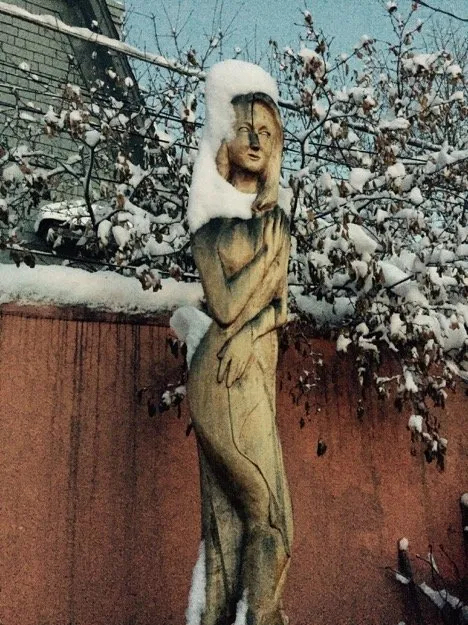
And here is a piece of wood that an Arbordermist created into a fountain.
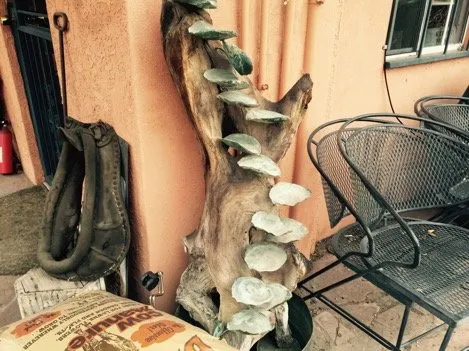
A bench next to a small pond for sitting with 3 legs.
A piece of Arbordermy that I collected from an artist who decided to carve long limbs into legs and create a free standing sculpture that he went on to win the “best of show” for an exhibit at Metro State University in the early 90’s.
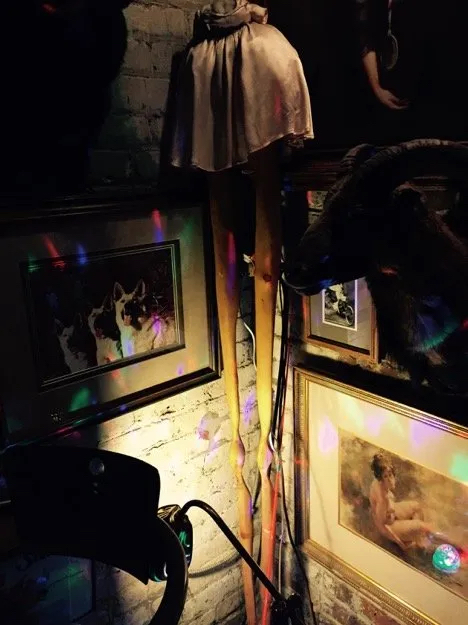
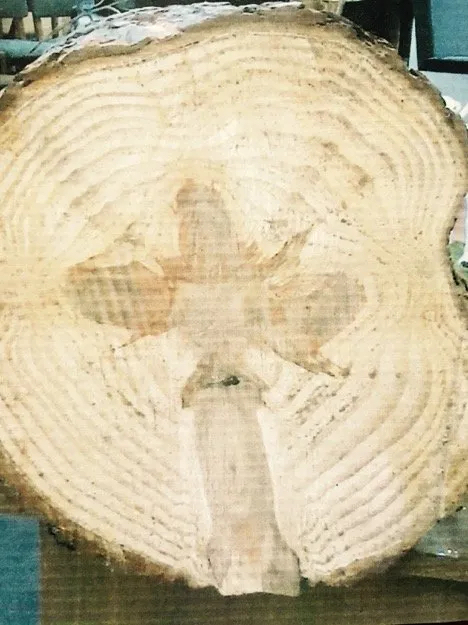
A piece of Arbordermy carved into by a young artist just beginning to start to work in this new medium.
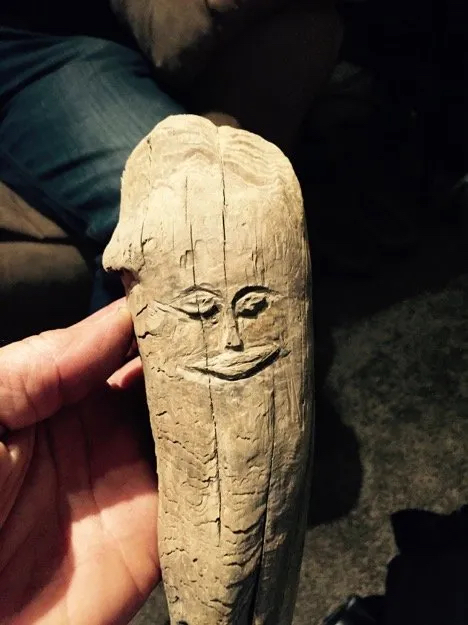
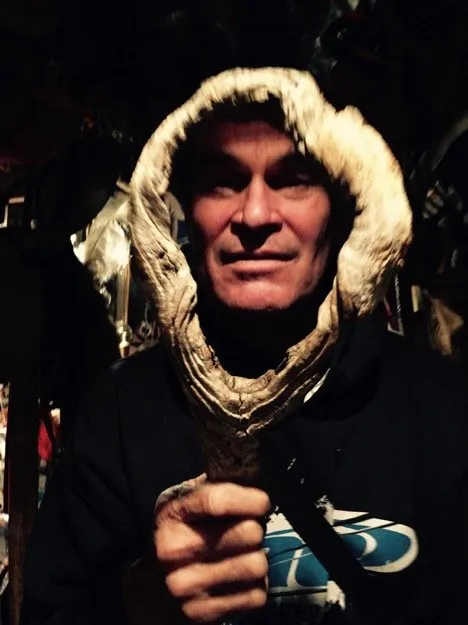
Here’s an example of Arbordermy being used in functional way as a table and chairs thus saving these chunks of wood from being chopped up into chips, having them become functional and not having to use other natural resources to produce.
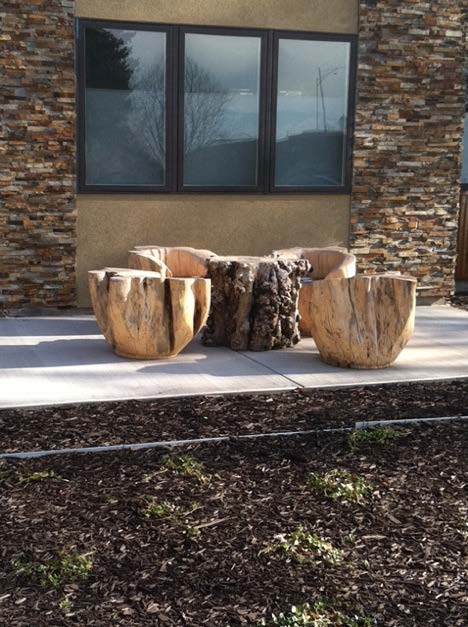
So as you can see Arbordermy can be inclusive of not only pieces that are unadulterat- ed or an altered with intention of not changing the piece in anyway to the full gamut of taking it really unusual piece of wood that has tons of character and carving and work- ing into it as you can see by the last two examples. My preference as an Arbordermist is to go for the purest form of it and choosing to not alter or change the piece, preferring to see the natural form and color that nature produces. In this way I can really say that the artist with these pieces was mother nature and there’s something special about that. I am simply the person who discovered or uncovered the beauty that nature produced.
When I think about Arbordermy and being an Arbordermist my main intention is not solely to sell the Arbordermy pieces necessarily but to really turn people on to the whole idea of looking out in nature and see the beauty that mother nature produces that we can collect preserve and enjoy for a lifetime.One aspect of arbordermy that makes it quite exciting is the fact that everyone can see it differently. In one instance a person might see a face of a person and another person might see something totally different. In some respects it’s kind of like abstract art and all the different things people see and interpret it to be. In this case that abstract art is a piece of wood that nature created and we as arbordermist we have the possibility of discovering and treasuring these gems that nature creates.
When I think about why I have come up with this term and why I want to start a website about Arbordermy, the main reason is that I want to open peoples eyes to the art nature creates and show them how easily they can discover a whole new way of looking at na- ture in the little gems that it leaves behind.The website that I’m creating will allow me to display the photographs that you see here and open peoples eyes to discover their own Arbordermy. It will allow others to submit examples of Arbordermy both unadulterated and pieces as you’ve seen above that have been carved into or are combined with other mediums. My lawyer Jim Spoya has just finished applying for the trade mark for the words Arbordermy and Arbordermist and is submitting application for the tagline “Na- tures Art” this next week.
Finally we have a word that defines and describes what it is that we’re doing when we find an interesting piece of wood and we keep it as a piece of art that nature produced . The beauty of Arbordermy is that anyone can do it and I believe that it gives creditability to a hobby that one might enjoy for a lifetime and be able to to sell or share with others as gifts or pass on as an inheritance. Anyone can do Arbordermy and any one can be an Arbordermist. A person can open their eyes to all the interesting pieces of wood in nature and begin or continue to discovered and appreciate whats to be found especially from trees that normally would normally be chopped into firewood or chipped up into mulch.
Since one of the conditions for application for trade mark is that a trade mark TMname be for the purpose of commerce and making money. My original intent was to have it be for the purpose of education and giving people an avenue for sharing through the web site different examples of Arbordermy with each other. Since there is an opportunity to make money from these Arbordermy pieces I have and that others have that I could broker on the web site I’ve decided that this will be yet another way that I’ll raise money for charity. My first thought was that it might be about be in support of a charity relating to mother nature but since I’m so involved in my work as an Arborist running AAA Emer- gency Tree Service working with nature that I would have any proceeds that might be derived from this business go towards my philanthropy building orphanages and schools in the world. It possible that at some point I might change this focus that might be more related to mother nature because of the natural fit it would have but for now given my commitment towards the poorest of the poor in India, the proceeds will go in that direction for the foreseeable future. The way this could look is that if someone wanted to purchase one of the pieces I have I would give them a price based on the uniqueness and if they were to proceed in the purchase I would have them write a check made out to the charity I support and have them send it to me. If someone want- ed to sell a piece through our website then a 25% portion of the total would go to my charity with the 75% balance going to the Arbordermist who was selling the piece. Of course for every piece sold a thank you and a tax deductible receipt would be sent to the buyer for 25% portion of the commission within 3-4 weeks directly from the charity and the the payment for the 75% portion would be done on a COD basis and shipped UPS or USP to the client.
I’m wanting to discover the beauty in nature, to discover the art that nature creates and it’s with my judgment and discernment that I get to be an artist and in arbordermist in the process. For so long they were just pieces of wood to me until I started to really look at them collectively. Now I see that it’s art and it takes an artist to find it, to harvest it, to preserve it and finally displaying it and sharing it with the world. The nice thing about this art form is that you can keep it inside or out it’s depends on the piece. Yes I believe that if you keep it inside it would last a longer but each piece has its own sense of where it needs to be. That’s yet another decision that you make as well as an arbordermist.
The thing that’s always exciting for me when I talk about Arbordermy with people is that it something that so many people can relate to because of their own personal experi- ences with it. Almost every person that I talk to has some kind of experience of Arbor- dermy even though they never had a word to describe it before. The majority of people I meet have memories of seeing an unusual piece of wood, know someone that does something with wood or maybe even has a piece of special wood in their home that they picked up at some point in their life. Now having arbordermy as a word to represent this art form allows people of all ages to open up and appreciate “nature’s art.”TM
Now as far as next steps for the Arbordermy project as of 2/28/15 I need to contact Bob Monsel to arrange a meeting with him in the writer to work on a number of items relating to the project including:
1) rewriting the draft for the website
2) submitting the word to Wikipedia
3) write an article for ISA , Denver Post and New York Times (I contacted Ellen Sweets a former writer from the Rocky mountain News who gave me a writer named Coleen@ the Denver Post to contact @ 303-954-1083

